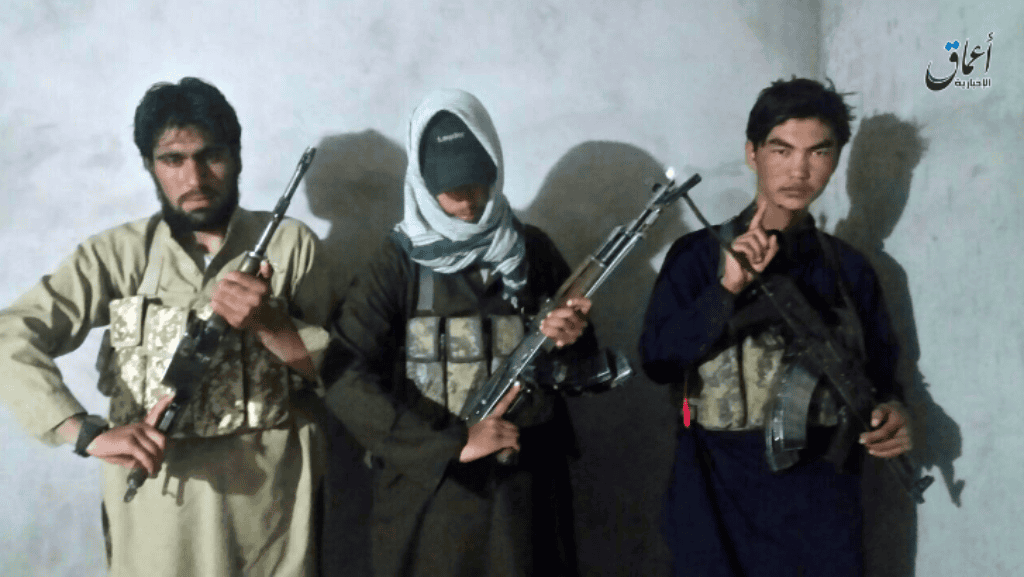
The Islamic State and a Pakistani Taliban faction based in Quetta both claimed responsibility for yesterday’s suicide attack at a police academy in Quetta that killed at least 60 people and wounded more than 120. Pakistani officials claim another jihadist group, Lashkar-e-Jhangvi al Alami carried out the assault.
At least three fighters armed with assault weapons, grenades, and suicide vests attacked the dormitory of the police academy after 11pm Monday evening as cadets were sleeping, according to Dawn. Two of the suicide bombers detonated their vests, causing the bulk of the casualties, and the third was shot by security personnel.
Pakistan’s Frontier Corps said that Lashkar-e-Jhangvi al Alami executed the attack and claimed that the suicide assault team communicated with handlers based in Afghanistan.
The Islamic State’s Khorasan province, which operates in South Asia, also took responsibility for the attack. In a statement released on Amaq News Agency, an Islamic State propaganda arm, the group named three attackers: Obaidah al Khorasani, Omar al Khorasani, and Talha al Khorasani, and also released a photograph of the fighters.
The Karachi faction of the Movement of the Taliban in Pakistan also claimed credit for the attack. In an email received by The Long War Journal, the group said four of its “suicide fighters” executed that attack, which was carried to “avenge the martyrdom of our mujahideen.”
The Lashkar-e-Jhangvi al Alami is a branch of the Lashkar-e-Jhangvi, an anti-Shia terror group that has integrated with al Qaeda and the Taliban in Pakistan’s tribal areas. The group has claimed major attacks in Lahore in 2010 and Kabul in 2011 but has largely been dormant since. It re-emerged this year and claimed credit for targeted killings in Wah Cantt and Quetta.
The Pakistani Taliban and the Islamic State have competed over claiming responsibility for mass-casualty attacks in the past. Both groups claimed credit for the Aug. 8, 2016 suicide attack at a hospital Quetta that killed scores of people.
The Pakistani Taliban has executed multiple attacks against schools and universities that were similar to last night’s suicide assault in Quetta. The most recent attack took place in January 2016, when a four-man suicide assault team dressed in military uniforms and armed with AK-47 assault rifles and suicide vests attacked Bacha Khan University in the northwestern district of Charsadda and killed 20 people. Khalifa Umar Mansour, the Movement of the Taliban in Pakistan’s leader for Peshawar and Darra Adam Khel, claimed the suicide operation.
Mansour is best known for the brutal December 2014 attack on a military high school in Peshawar that killed more than 120 people, mostly students. He also is responsible for the September 2015 suicide assault on the Pakistani Air Force camp in Badabair. The US is thought to have killed Mansour in Afghanistan last summer.
Pakistan often accuses Afghanistan of sheltering commanders from the Movement of the Taliban in Pakistan. The US has killed several Pakistani Taliban leaders in airstrikes inside Afghanistan. However, the group operates in areas in eastern Afghanistan that are out of the control of the Afghan government.








3 Comments
There can be no better comment on this story than the famous quote from US Presidential hopeful Hillary Clinton: “You can’t keep snakes in your backyard and expect them only to bite your neighbors. Eventually those snakes are going to turn on whoever has them in the backyard.
This looks like the act from the Islamic State, because they’ve provided proof of a photo, whereas the Taliban haven’t. Pakistan’s claim that the Al-Alami branch did it, is just nonsense, perhaps the Pakistanis don’t want to admit that the Pakistani Taliban and the Islamic State are gaining strength in that terrorist state, which the Pakistani ISI trains others to fight against India and Afghanistan.
The one on the far right with no beard looks really familiar to me from another one awhile ago, even tho im not completely sure I think it was the Cafe attack in Bangladesh I think it was there atleast, possibly ISIL is taking multiple pictures of there people in different sets of clothing and perhaps some different people are rotated around all at the same time to give the illusion of 3 new fighters in each one. People tend to think ISIL is somewhat dumb, but in areas like trickery… strategy.. propaganda etc. It is very good at taking advantage of any opportunity to make itself look as strong as possible to people, therefor I think they could have easily thought of taking extra fake pictures precisely to claim international attacks it had absolutely nothing to do with and make them look like they were legitimate well planned attacks originating from the main group. The picture 100%, if im right, would be effective at giving them all the credit…almost making people not even consider other claims…id wish someone would look into the possibility that im right, that could potentially cause alot of harm to the group all together by showing to people how they lie like this not only to try and scare their enemies, but also to deceive their own people/sympathisers into doing things for them..*im not 100% sure about any of this, just a thought